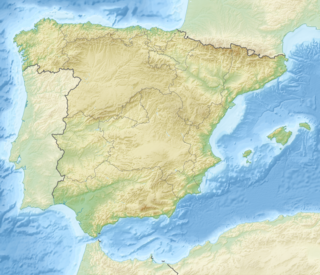 W
WThe Bohdašín Formation is a geologic unit of Late Triassic age, located in the Czech Republic. A small tridactyl footprint of a coelophysoid theropod or an indeterminate dinosauromorph was found around 1995 near Červený Kostelec in these strata. It was classified as ichnogenus Eubrontes. In 2011, another dinosaur footprint was discovered, this time classified as ichnogenus Anomoepus.
 W
WThe Bukobay Svita is a Middle Triassic geological unit in Russia. It is composed primarily of red or grey lacustrine sediments, reconstructing a humid and marshy depositional environment. Bukobay is the youngest section of a Triassic terrestrial succession exposed south of the Ural Mountains. It is equivalent to a biostratigraphic unit, the Bukobay Gorizont, which is also called the "Bukobay Horizon" or "Mastodonsaurus" fauna). Notable components of the Bukobay fauna include "Mastodonsaurus" torvus, Elephantosaurus jachimovitschi, and Chalishevia cothurnata. The flora is also diverse, including Equisetites arenaceus and Ladinian-age palynomorphs.
 W
WGibraltar Limestone consists of greyish-white or pale-gray compact, and sometime finely crystalline, medium to thick bedded limestones and dolomites that locally contain chert seams. This formation comprises about three quarters of the Rock of Gibraltar near the southernmost tip of the Iberian peninsula. Geologists have found various poorly preserved and badly eroded and rolled marine fossils within it. The fossils found in the Gibraltar Limestone include various brachiopods, corals, echinoid fragments, gastropods, pelecypods, and stromatolites. These fossils indicate an Early Jurassic age for the deposition of the Gibraltar Limestone.
 W
WThe Han-Bulog Formation is a geologic formation in Albania. It preserves fossils dating back to the Olenekian to Anisian of the Triassic period.
 W
WThe Kalur Chert is a geologic formation in Albania. It preserves fossils dating back to the late Bajocian to mid Oxfordian of the Jurassic.
 W
WPeruc-Korycany Formation is a geologic unit of Upper Cretaceous age, located mostly in the Czech Republic. It is the oldest unit of the Bohemian Cretaceous Basin, which overlies metamorphosed rocks of the Bohemian Massif. It consists of fluvial to shallow marine sediments. Dinosaur fossil remains about 94 million years old were found in 2003 near the village Mezholezy (Miskovice), by Kutná Hora. This small ornithopod dinosaur was officially named as Burianosaurus augustai in 2017.
 W
WThe Pietraroia Plattenkalk is a Cretaceous geologic formation located in the Italian municipality of Pietraroja, near Benevento, in Campania region. It is of Albian age. Dinosaur remains diagnostic to the genus level are among the fossils that have been recovered from the formation.
 W
WThe Robbedale Formation is a geological formation dating to the Berriasian stage of the Early Cretaceous, about 142 million years ago. It is on the island of Bornholm, Denmark.
 W
WThe history of Saint Anthony caves started in the second half of the nineteenth century when Anthony of Kiev came to Boldina Gora. The place had unique power, so he dug out a cave for solitude and prayers. Chernihiv and Kiev were the largest centres of the Kievan Rus, and they faced constant confrontation. To keep up with Kiev's pace, the first church of the contemporary Trinity Monastery complex appeared a century later. The total length of the Chernihiv underground premises is about 350 meters.
 W
WSciara del Fuoco is a talus scree or depression located on Stromboli Island in Italy. It runs along the island's northern flank and is bounded by two ridges. It now serves as a major tourist attraction on the island.
 W
WThe Sierra Perenchiza Formation is a late Campanian to late Maastrichtian geologic formation in Spain. Dinosaur remains are among the fossils that have been recovered from the formation, although none have yet been referred to a specific genus.